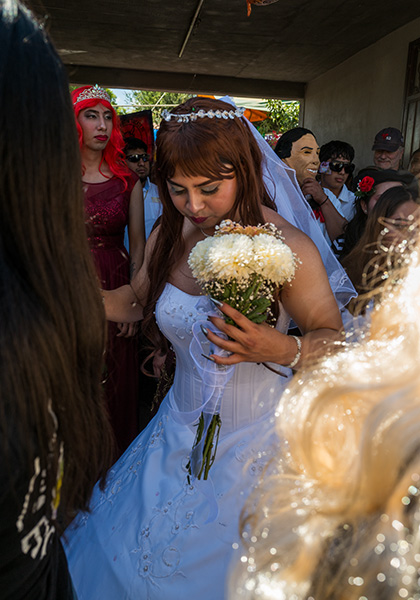 |
"Every man's life is a fairy tale written by God's fingers." Hans Christian Andersen
Sunday, February 18, 2024
Carnaval in San Martín Tilcajete
Sunday, February 11, 2024
Pitchforks, Pagans and Ogres
We strolled into the heart of Oaxaca City, engulfed by the vibrant chaos of pre-lent Carnaval. Brass and percussion bands filled the air with lively rhythms, setting the stage for the extravagant procession of revelers. Everywhere we turned, people adorned in elaborate costumes, some as devils with horns and pitchforks, others as pagan beings and ogres, paraded through the streets with infectious jubilation. Oaxaca always has surprises up its sleeve.
Amidst the chaos, we found ourselves immersed in a world where tradition and revelry collided in a glorious celebration of life. It was pure joy shared between us as we danced through the streets, embracing the spirit of Carnaval and the warmth of our Oaxacan community.
In fleeting moments, surrounded by devils and ogres, we found ourselves utterly captivated by the magic of Oaxacan carnival, grateful for the opportunity to revel in its splendor together.
Sunday, February 04, 2024
Saying Something Difficult
What struck me was tremendous loss while reading the CNN article,“She was fleeing with her grandson, who was holding a white flag. Then she was shot.” In intimate words and pictures the senseless event was described by the women's surviving family members.
Immediately I knew the murdered woman was of a pure heart and devoted to her family. I know Middle Eastern families and have friends in Egypt so the story felt more personal to me.
I decided to create a painting and used AI to help visualize the scene. AI did a great job cobbling together a visual narrative. I combined images to arrive at a “sketch” of the painting I wanted to make.I wanted to show the war-torn street in Gaza, with rubble and bombed buildings . . . and a dead woman sprawled across the road. The other part is the little boy with his white flag of surrender and peace, holding the hand of his grandmother. For some reason, I chose to portray the picture as witness to the moments before and after the tragedy occurred.
When I start a painting in the “old” style of art, where I am depicting a realistic scene, I make a drawing on canvas, and underpainting with limited color. A full fledged piece arrives that includes all elements of color, drawing and subject.
After getting my drawing on canvas, when I began the underpainting, I dripped some red⏤symbolizing life and death in art. I felt sure as I worked, knowing the subject was not coming out of any thought of material gain. It is not pleasing fluff ready for any wall in a home. Rather, I had deep feeling of doing something meaningful, saying something difficult that needed to be said.














